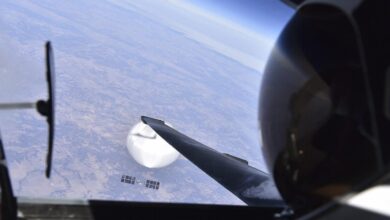Commercial Flight Took Evasive Maneuvers To Avoid A Collision With A Private Jet

A private jet and a Airbus A320 commercial aircraft got a little too close for comfort in the skies above southern Florida last weekend.
Allegiant Air flight 485 left Fort Lauderdale-Hollywood International Airport and was routed by a traffic controller at the Miami Air Route Traffic Control Center. The pilot was told to turn east at 23,000 feet. There, it crossed right into the path of a Gulfstream business jet heading north, according to NBC Miami:
The pilot received an automated alert about another aircraft at the same altitude and took “evasive action,” the FAA said in a statement.
The pilot of the Gulfstream also took evasive action after receiving a similar alert, officials said.
The Allegiant flight returned to Fort Lauderdale, where a flight attendant was treated for injuries, officials said.
An Allegiant spokesperson declined to comment when contacted by NBC6, writing, “I must refer you to the FAA, as this is an active investigation.”
Naturally the Federal Aviation Administration is investigating the incident. Since turbulence was expected, and the flight was only 20 minutes or so underway, the 174 passengers aboard the Allegiant Air flight remained unharmed, but two flight attendants were thrown to the floor of the fuselage during the maneuver.
Longtime commercial airline pilot and Air Force veteran Dan Stratman told NBC there’s been a spike in near-misses this year.
“In this case, that seems to be the most likely scenario, that the two airplanes were on a collision course and the controller might not have remembered that. Luckily, the equipment took over and kept the disaster from happening,” Stratman said. “This year has been a bad year, and there’s been a spike in near-misses, both in the air and on the ground, on runways. The FAA has convened some meetings to try to figure out what’s going on.”
Stratman said that possible theories include trying to rehire airline pilots and air traffic controllers, after senior personnel were laid off or retired early during the COVID-19 pandemic. He also noted that air travel has increased since the peak of the pandemic.
“The equipment worked exactly the way it should have. All airliners have had something called TCAS for many years to alert pilots that there’s a potential collision,” he said. “Now, all airplanes, even small ones, are required to have an updated version.”
South Florida is a particularly tricky place to fly these days, what with the tourist destinations, extreme weather, influx of private planes and oh yeah, space launches. The FAA is also dealing with a shortage of air traffic controllers up and down the eastern seaboard. While vacancies are being filled, it takes years to train someone to handle the complex ins-and-outs of air traffic.




